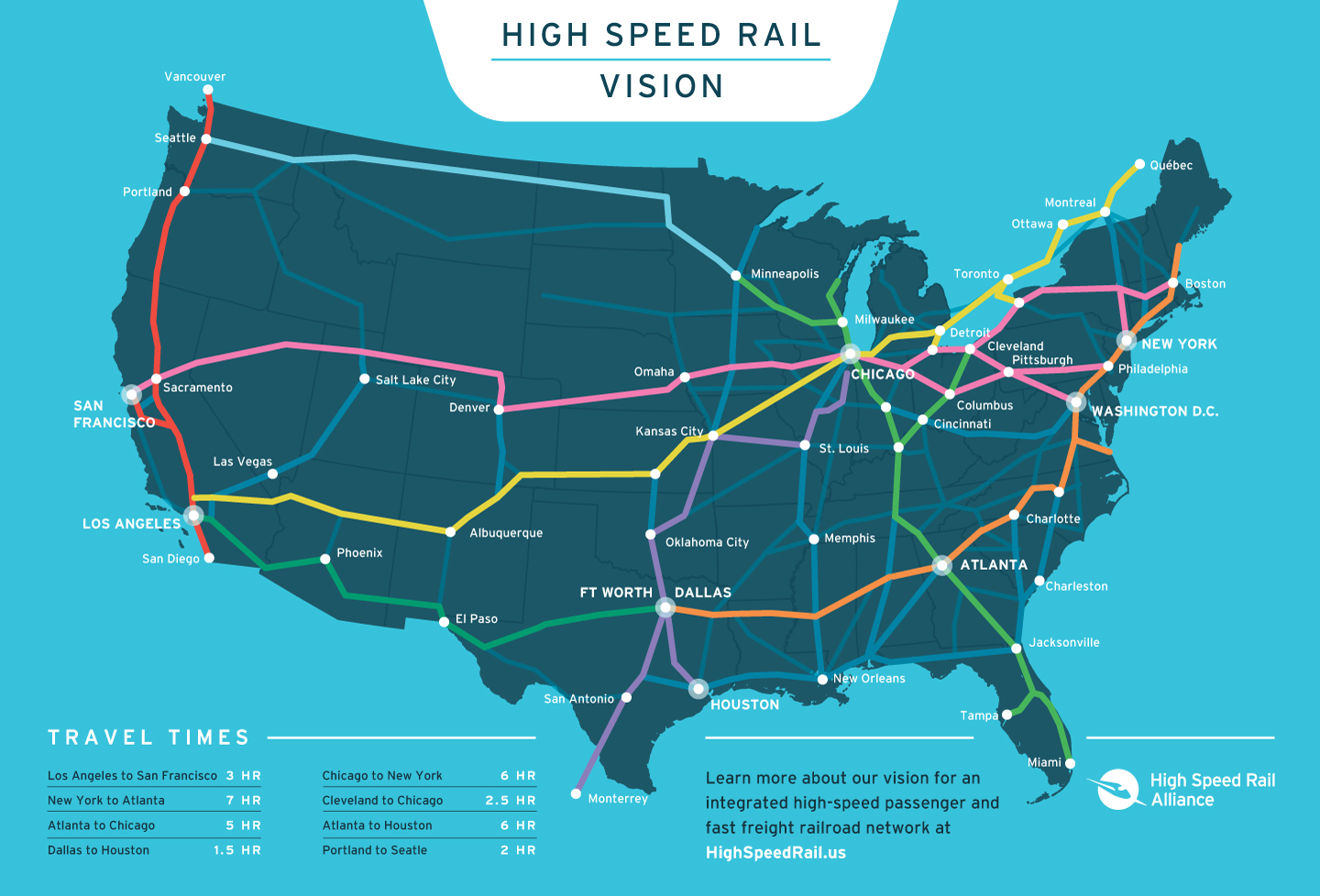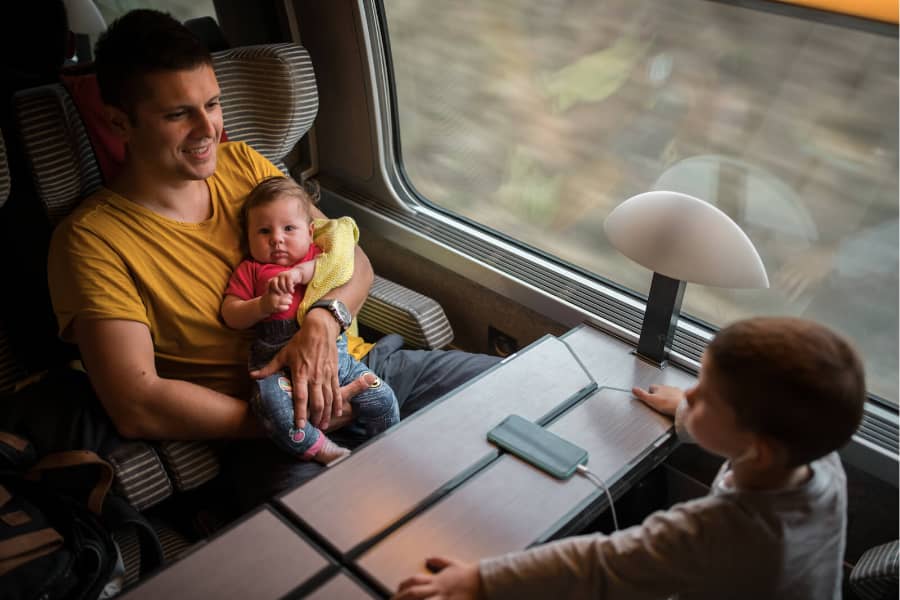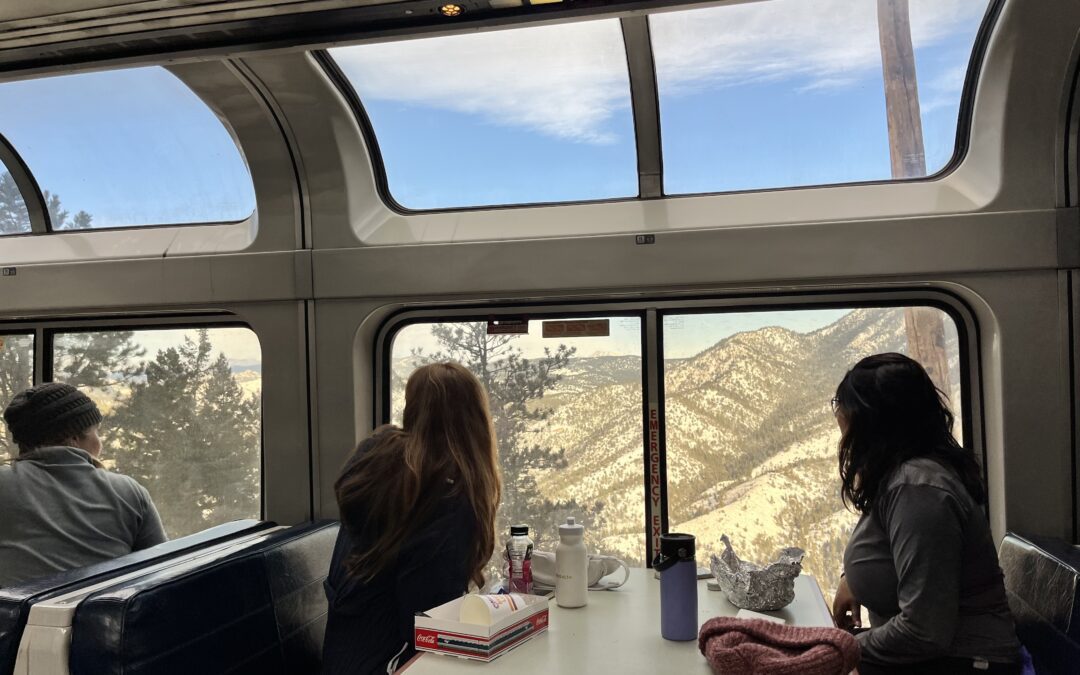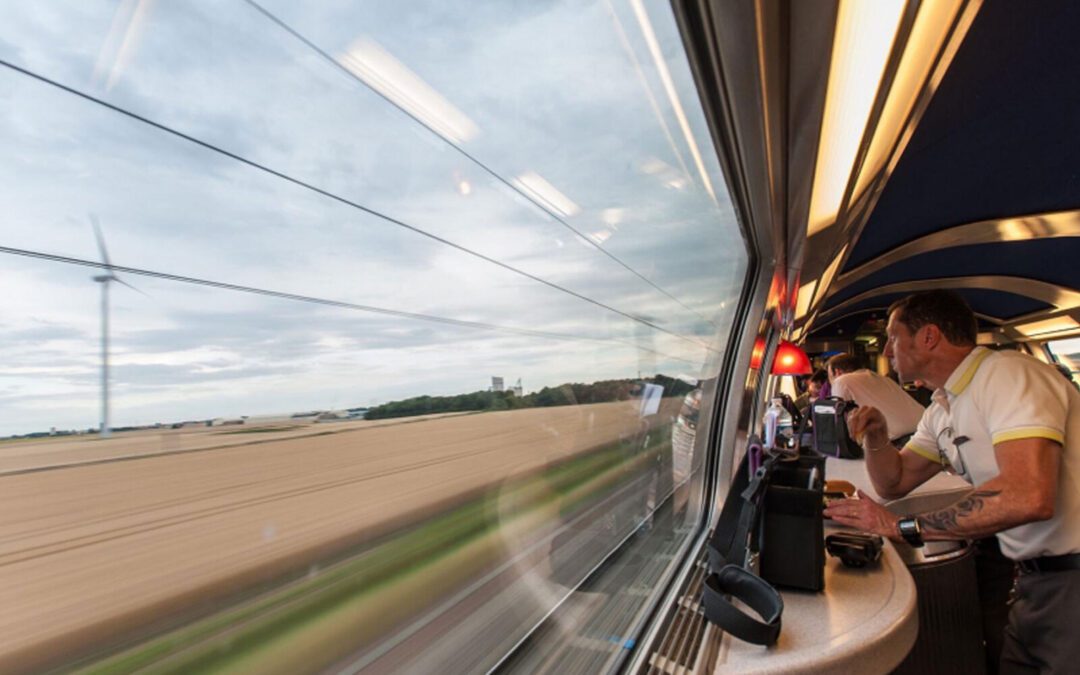Big Changes in Texas and New York This week, US Transportation Secretary Sean Duffy announced major shifts in direction for two important projects. As advocates for quality trains, we need to speak up for the changes we want to see. On Tuesday, Sec. Duffy announced...
With America’s first two true high-speed rail projects underway in California and Nevada—and with Congress appropriating tens of billions of dollars in new railroad funding in recent years—this is an exciting moment for high-speed rail. But to sustain and build on the momentum, “we need to address the intercity rail market with a holistic vision for rail across the country.”
That’s one conclusion of a new report by the Transit Costs Project at New York University’s Marron Institute of Urban Management.
The authors note that we’ve been here before—more than once. Projects were ready. Federal funds were flowing. Enthusiasm for high-speed rail was high. But there was little actual progress, and the momentum soon faded, because there wasn’t the institutional strength to deliver projects.
Here are several key takeaways:
“the United States Department of Transportation (US DOT) and Congress need to make an affirmative decision to support a financially sustainable intercity passenger rail plan that includes true high-speed rail.”
“the Federal Railroad Administration (FRA), a new entity within the US DOT, or Amtrak should develop an intercity rail plan that reflects national priorities, specifically weighing trade-offs against other modes and prioritizing competitive travel times vis-à-vis driving and flying, rather than trying to assimilate state rail plans of varying quality or relying solely on grant programs to stitch together a vision.”
“At the federal level and likely in coordination with an international or national standards association, FRA, or another entity should create national high-speed rail design standards.”
“[focus] on bolstering university education and strengthening linkages to industry by expanding training opportunities to develop the specialized education, skills, and experience to plan, design, and deliver high-speed rail. It should be noted that a more robust domestic high-speed rail industry would likely catalyze these efforts.”
“project sponsors need to invest in and cultivate internal capacity to develop well-defined projects, manage consultants and contractors, and coordinate across multiple manageably sized contract packages rather than a few large contracts.”
“Project sponsors, ultimately, need to be able to carry out planning separately from environmental review to avoid costly mistakes and delays. This requires support from governors, state legislatures, and the federal agencies awarding billions of dollars in grants to construct nationally significant projects.”
The report is well worth reading in full. The Alliance has covered many of its themes in blog posts and webinars. Most recently, analyst Paul Lewis discussed reforms the US needs to implement to build HSR projects more cost-effectively. (Blog here and webinar here.) Previously, one of the reports authors, Eric Goldwyn, discussed why transit projects cost so much to build in the US. (Blog here and webinar here.)
Also see our analysis of why the US approach to planning and funding railroad projects is really dumb; our coverage of how the FRA’s new Corridor ID program gives momentum to the push for a national railroad network; and our explanation of how railroad networks can grow incrementally, incorporating different kinds of trains and transit systems—i.e., the “integrated network approach.”
Help make a national railway program a reality
Join the High Speed Rail Alliance to help make high-speed rail and regional rail a reality across the country.
The Latest from HSRA
Our Latest Blog Posts
Check out the latest news, updates, and high speed rail insights from our blog!






